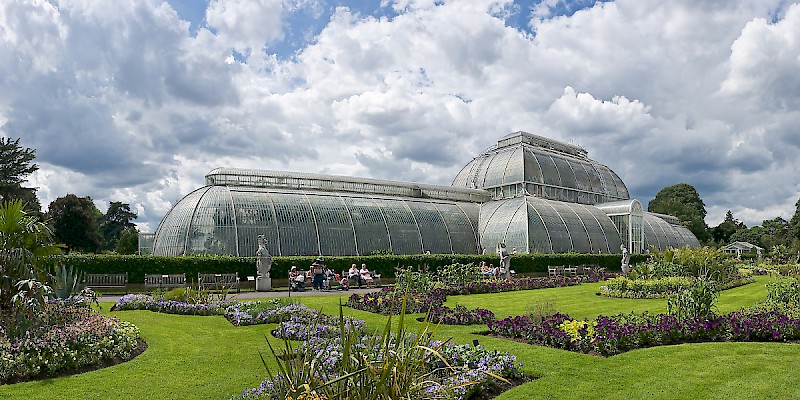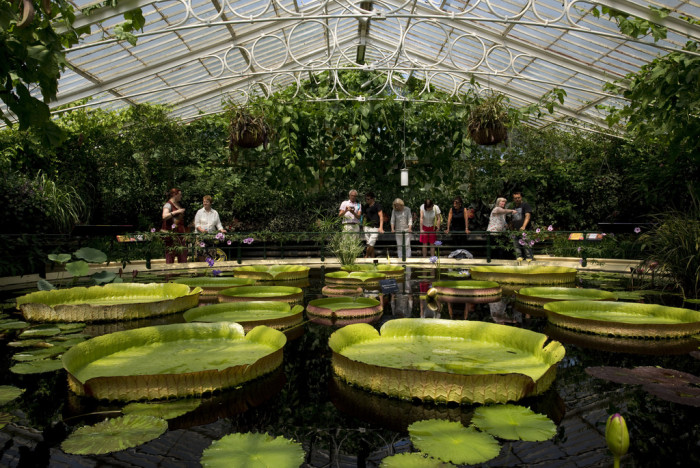Kew Gardens ★★☆

One of the world's top botanical gardens and parks
Though Italian universities had started keeping scientific gardens in the mid 16C—a fashion that spread throughout Europe—Kew was the first to do it on a truly grand scale, expanding to 300 acres since its opening in 1759, serving as the botanical storehouse of the British Empire, and establishing the model of greenhouses, formal gardens, nurseries, and labs that has since been adopted by most other botanical gardens around the world.
Kew has a dizzying array of attractions, easy to get lost in for hours, with gardens dedicated to grasses and to water plants, cherry trees and Japanese landscaping.
Among its greenhouses are the Victorian Palm House—all wrought iron and glass from the 1840s—the angular Princess of Wales Conservatory opened in 1989 by Princess Diana and devoted largely to tropical plants (both wet and dry zones, so nice orchids and cacti), the small but soaring Alpine House built in 2006, and the massive Temperate House (due to reopen in 2018), the largest Victorian glass structure in the world.
The popular Treetop Walkway lets you stroll 200m (656 feet) along the canopy of sweet chestnut, oak, and lime trees at 18m (59 feet) above the ground.
The path from the Treetop Walkway that leads below ground to the Rhizotron, a space where you can examine the interaction of plants and animals with the soil.
The buildings of Kew Gardens
The 1631 Kew Palace itself, King George III's favorite retreat and the smallest official royal palace (it was originally built for a Dutch merchant named Samuel Fortrey). Its small garden contains only period plants from 17C England.
One of the oldest features of the gardens is the 50m (163-foot) Chinese Pagoda in the SE corner, a famous curiosity of Georgian London when it first opened in 1762 (currently being restored and due to reopen in 2018).
There are also two buildings showcasing botanical art: the Shirley Sherwood Gallery of Botanical Art and the Marianne North Gallery, its walls a puzzle of late 19C paintings by the self-taught botanical illustrator.
Kew's place in history
Kew has been around so long, the gardens have acquired their own historical significance, serving both as a model for many of the world's other botanical gardens for the past 250 years, and as a living museum of premier landscape design from the 18C through the 20C, preserving the horticultural architectural theories of William Chambers (who added the Chinese pagoda in 1761–62), Charles Bridgeman (who created the sunken garden in 1734), William Kent, Capability Brown (in the 1770s), and William Nesfield (who laid out the original rose garden in 1848)—all part of why Kew was declared a UNESCO World Heritage Site in 2003.
TicketsToursTips
It takes a solid two hours to do Kew justice (especially since you kinda had to go out of your way to get here in the first place).
You could easily spend half the day or more here.
Kew Gardens offers free tours by its residents experts:
- Introduction to the gardens tours: Daily at 11am and 1:30pm
- Themed tours: Daily at noon (also at 2pm in summer)
- Meet the experts tours: Tuesdays at 11:30am and 2:30pm



















